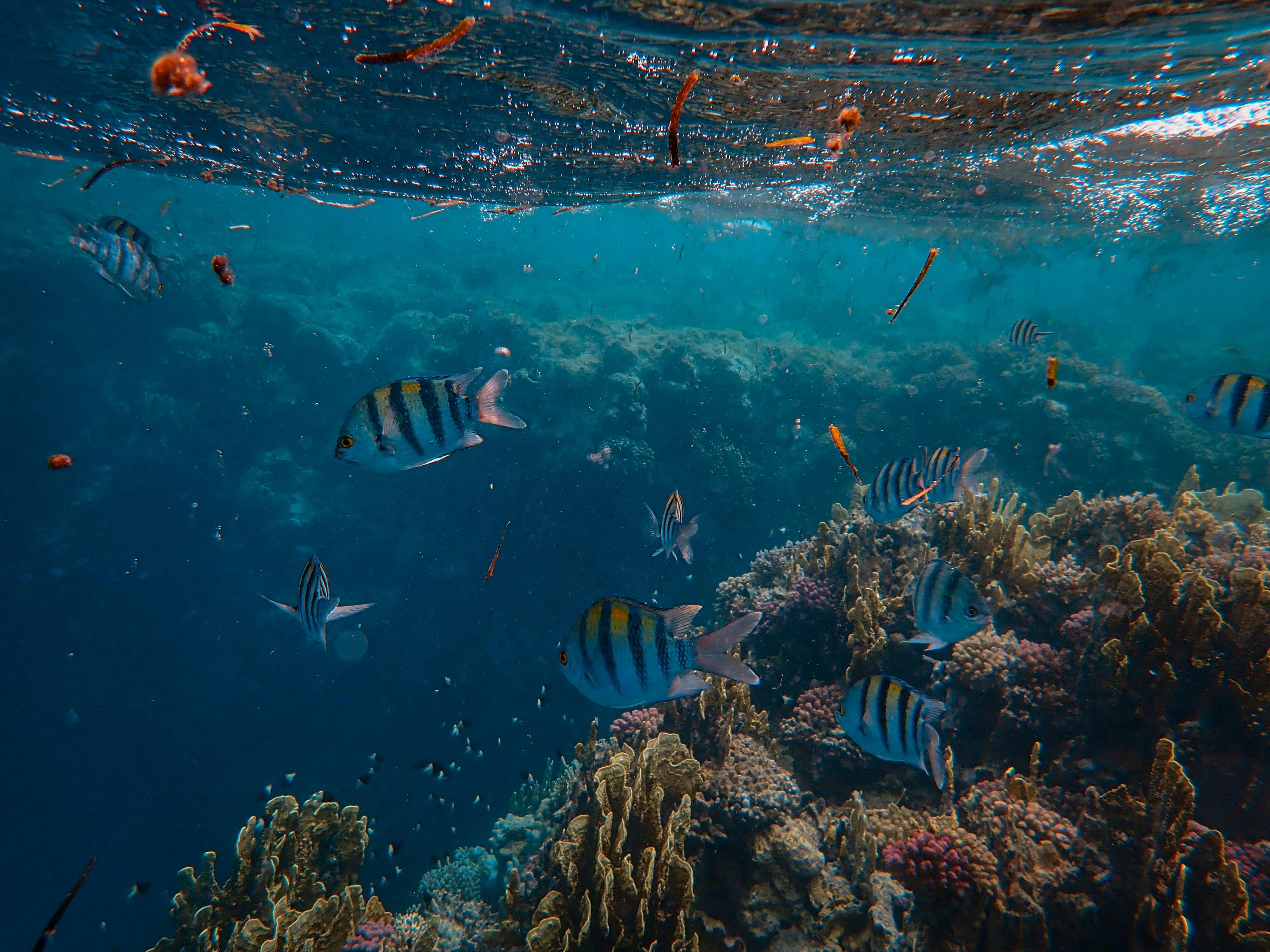Smart Ways to Determine if Fish are Omnivores in 2025

Smart Ways to Determine if Fish are Omnivores in 2025
Understanding Fish Diets and Their Importance
Determining the dietary habits of fish is vital not only for aquarists but also for ecologists and conservationists. The understanding of whether fish are omnivores can influence various aspects of fish husbandry, environmental management, and fisheries practices. An omnivorous fish typically thrives on a variety of food sources, combining animal and plant matter, which allows for more flexible feeding behaviors and greater adaptability in diverse environments. With increasing pressures on aquatic ecosystems, recognizing fish diets helps inform sustainable fishing and conservation efforts.
Fish diets can be categorized primarily as carnivorous, herbivorous, or omnivorous. Each of these dietary categories plays a significant role in maintaining ecological balance within their habitats. Additionally, understanding fish diets contributes to insights into fish growth, population dynamics, and interactions within the aquatic food web. Hence, dissecting the specifics of their eating habits can unveil much about the health of marine and freshwater ecosystems.
This article will delve deep into identifying the characteristics and behaviors of omnivorous fish, explore their feeding habits, and discuss methods for evaluating fish diet effectively. We will also highlight notable omnivorous species such as goldfish, guppies, and tetras, along with their ecological significance and dietary needs.
Let's dive into the smart strategies for determining if fish are omnivores!
Identify Key Fish Characteristics for Omnivory
Physical Traits and Structures
The anatomy of fish often provides critical clues about their dietary habits. Omnivorous fish commonly exhibit specific physical adaptations that allow them to efficiently process a varied diet. For instance, their gill structures may possess finer filaments suited for filtering small zooplankton and detritus.
Moreover, the dental structure plays a vital role in defining whether a fish is an omnivore. Fish featuring flat, molar-like teeth are typically inclined toward crushing algae and plant matter, while pointed teeth are more suited for capturing prey like zooplankton and smaller fish. Understanding the morphology of different fish species is essential for evaluating their feeding strategies.
These physical adaptations can be observed in many popular aquarium fish. For example, goldfish exhibit teeth that can crush soft plant material, indicating their omnivorous diet. Meanwhile, guppies showcase versatile feeding mechanisms that allow them to adapt their diets based on available resources in their habitats.
Recognizing these traits can be a straightforward approach to understanding whether a specific fish species behaves as an omnivore or aligns with other dietary classifications.
Behavioral Observations and Feeding Patterns
Fish feeding behavior presents significant insights into their dietary preferences. Omnivorous fish often display foraging behaviors that reveal their adaptability in consuming diverse food sources. Observing the feeding patterns in various environments can indicate a fish's flexibility in their diet.
For example, when assessing fish such as tilapia or herring, noting their foraging strategies can point toward omnivorous tendencies. Tilapia are known to graze on algae, demonstrating herbivorous qualities, while also consuming small invertebrates, which signifies their omnivorous feeding habits. Thus, monitoring what food items these fish actively pursue provides valuable data on their dietary behaviors.
Moreover, fish teaching behaviors in groups signify that they can respond to the availability of food resources in their surroundings. Schools of fish, including schooling tetras, group together to maximize their forage efficiency, contributing to their omnivorous diet preferences. This behavior illustrates a crucial aspect of their survival strategy, indicating their ability to adapt and thrive in diverse feeding environments.
In conclusion, careful observation of feeding habits and behaviors is essential when assessing the omnivorous nature of various fish species.
Analyzing Fish Diets Through Habitat and Food Availability
The Role of Aquatic Environments
Fish diets are heavily influenced by the context of their habitats. Aquatic ecosystems, whether marine or freshwater, provide a diverse range of food sources that affect fish feeding strategies and dietary flexibility. Understanding these habitat characteristics is pivotal for identifying omnivorous fish.
In freshwater ecosystems, for instance, fish species like guppies and goldfish can be classified as omnivores due to the availability of both plant and animal matter, such as algae and detritus. Conversely, in marine environments, species like sea bass thrive in areas rich in zooplankton and algae, showcasing their omnivorous tendencies.
Seasonal variations also influence food availability significantly. In many ecosystems, shifts in resource availability lead fish to adapt their dietary habits. For example, in some migratory fish populations, changing seasons may utilize different food sources over the year, reflecting an omnivorous diet.
Overall, assessing the relationship between fish species and their habitats, along with the available food sources, plays a crucial role in determining their dietary categorization.
Food Chain Dynamics and Feeding Ecology
Fish exist within intricate food chains that illustrate their essential role in aquatic ecosystems. Understanding the ecological dynamics that maintain these relationships can help decipher whether fish species are omnivorous. Omnivorous species often occupy intermediate trophic levels, serving as both predators and prey, thus enhancing biodiversity and ecological balance.
For instance, the role of detritivores in the ecosystem is vital as they process organic materials and contribute to nutrient cycles, demonstrating the importance of omnivorous fish in many food webs. Additionally, the presence of herbivorous and carnivorous fish emphasizes dietary interdependence within aquatic communities. The relationship between prey availability and omnivorous fish species significantly affects population dynamics and ultimately impacts overall ecosystem health.
Recognizing the implications of dietary flexibility within the food chain reinforces the importance of omnivorous fish. Their ability to thrive within varying environments and utilize multiple food sources enhances their survival and enhances the stability of aquatic ecosystems.
Practical Methods to Identify Omnivorous Fish
Fish Diet Experiments and Observations
Conducting controlled dietary experiments provides robust insights into fish eating habits. For example, aquarists often perform feeding trials, offering various food items to observe preferences and determine dietary habits. For instance, an omnivorous fish like the tetras displayed varying responses to a mix of plant matter and zooplankton during experiments.
By documenting the quantity and frequency of consumed food items, one can gather quantifiable data that unequivocally aids in identifying dietary preferences, shedding light on their omnivorous tendencies. Such experiments also help correlate the effects of diet on fish health and growth, underscoring the importance of a balanced diet.
Additionally, utilizing feeding strategies and behavioral observations during these trials contributes valuable context for interpreting the results of fish feeding experiments. Social interactions, competition for food, and individual adaptability can all inform our understanding of how these dietary strategies coalesce.
Ultimately, deliberate and well-structured feeding experiments enable a more profound comprehension of omnivorous fish characteristics.
Analyzing Digestive Systems and Nutritional Studies
Examining fish digestive systems can also provide insights into their dietary habits. Digestive enzymes and gut morphology often indicate dietary preferences based on their anatomical adaptations. Omnivorous fish generally possess a more extensive and complex digestive system, capable of processing both plant and animal matter efficiently.
Conducting nutritional studies on various fish species involves a closer look at food composition, energy intake, and growth performance. Research indicates that a balanced diet composed of both protein from animal sources and carbohydrates from plants significantly aids in the well-being and survival of omnivorous fish. Such studies underscore the essential interplay between diet and fish nutrition, influencing fish husbandry and farming practices.
By translating these research findings into practical applications, aquarists and aquaculture professionals can tailor feeding regimes that support the health and growth of omnivorous fish populations in their care.
Conclusion and Future Implications for Fish Studies
Concluding Thoughts on Understanding Omnivory
Understanding whether fish are omnivores hinges on recognizing their anatomical features, behavioral traits, habitat dynamics, and the feeding ecology within their environments. By employing methods such as dietary experiments and observational studies, we can adequately categorize fish and uncover their ecological significance.
As fish populations face mounting pressures from overfishing, habitat loss, and climate change, maintaining a focus on the dietary habits of fish species is more crucial than ever. Omnivorous fish play a vital role in sustaining aquatic ecosystems, making their study essential for conservation efforts.
By enhancing our knowledge of fish diets and feeding behaviors, we can ensure effective management and protection strategies that benefit not only fish species but also the ecological health of our waters.

